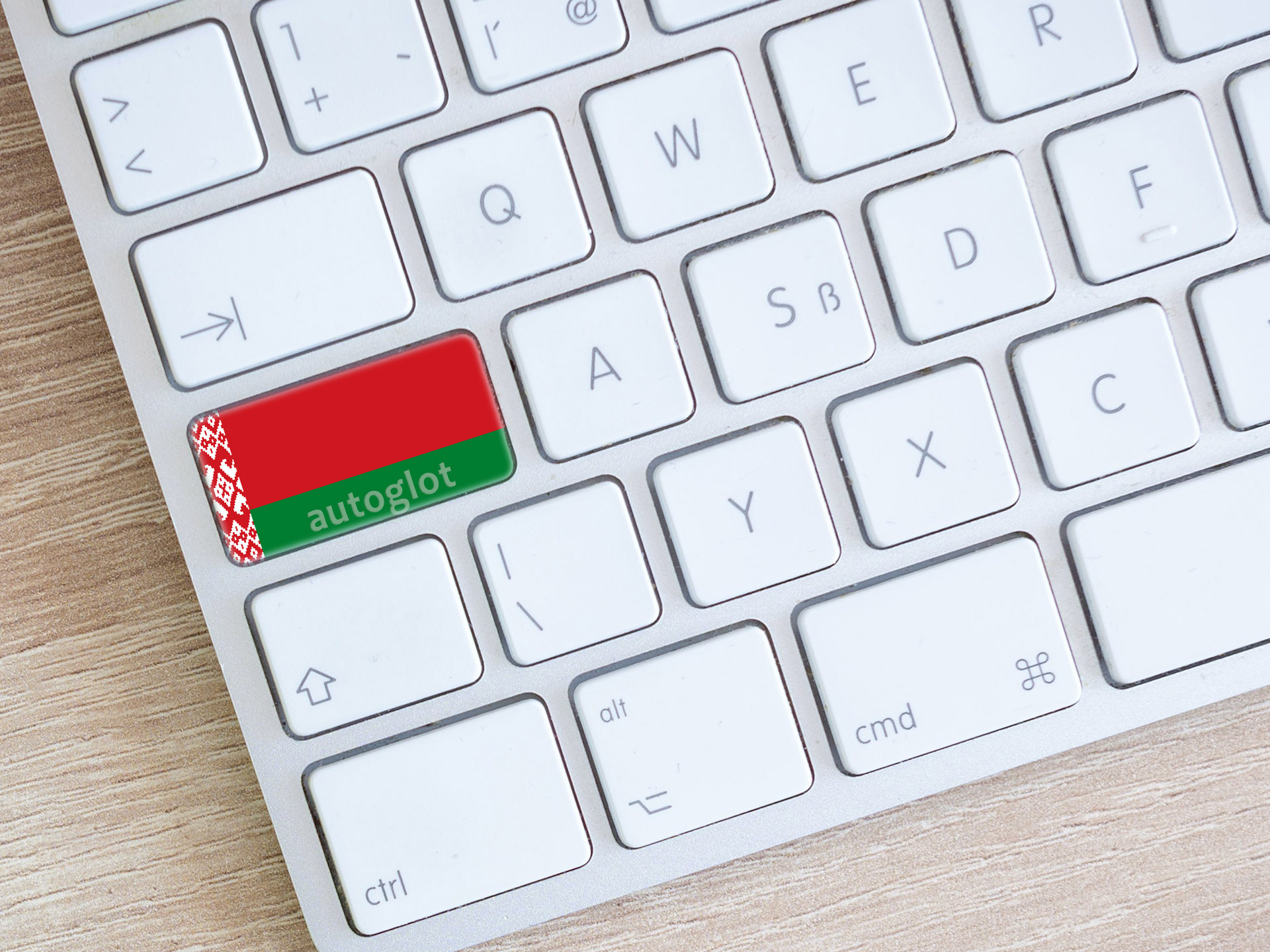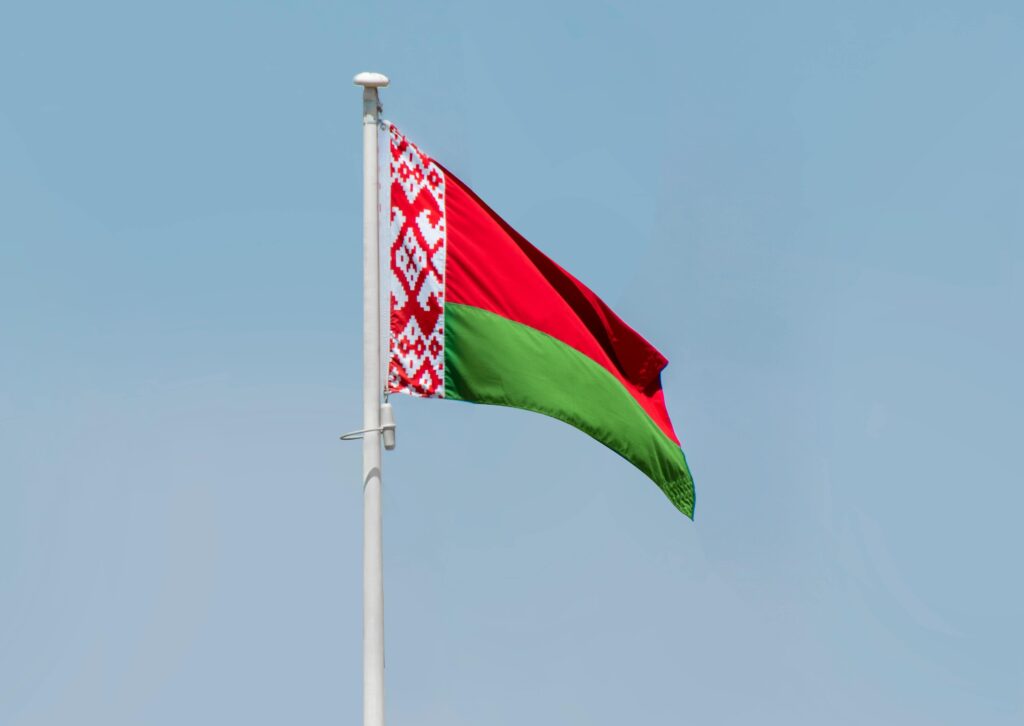
Көп тилдүү веб-сайттар дүйнөлүк аудиторияга жетүү жана рынокту кеңейтүү үчүн жаңы мүмкүнчүлүктөрдү ачат. Бир нече тилде мазмунду сунуштоо менен, бизнес колдонуучуларды натыйжалуураак тарта алат, трафикти көбөйтөт жана кардарлардын канааттануусун жакшыртат. WordPress сайтынын ээлери үчүн сайтыңызды ар кандай тилдерге которуу жөн гана вариант эмес, бүгүнкү санариптик ландшафтта атаандаштыкка жөндөмдүү болуу зарылчылыгы.
Киришүү: Көп тилдүү веб-сайттардын артыкчылыктары жана белорус тилине которуунун маанилүүлүгү
Беларусь тили - Чыгыш Европадагы веб-сайтыңыздын жеткиликтүүлүгүн кеңейтүүдө эске алынуучу баалуу тил. Беларустун расмий тили катары, ал маданий мааниге ээ жана уникалдуу аудитория менен бизнести байланыштырат. Беларуста көптөгөн адамдар эки тилдүү жана орусча түшүнсө да, белорус тилинде мазмун берүү жергиликтүү колдонуучулардын арасында жакшы резонанс жаратып, ишенимди жана берилгендикти бекемдөөгө жардам берет.
Вебсайтыңызды Беларус тилине которуунун негизги артыкчылыктары:
- Жакшыртылган колдонуучу тажрыйбасы: Колдонуучулар өз эне тилиндеги мазмун менен көбүрөөк иштешет, бул сайтта жакшыраак тажрыйбага алып келет.
- Көбөйтүлгөн жеткиликтүүлүк: Беларус тилине которуу сиздин веб-сайтыңызды өзүнүн улуттук тилин баалаган калк үчүн жеткиликтүү кылат.
- SEO артыкчылыктары: WordPress сайтыңызды белорус тилине которуу менен, белорус тилдүү аймактарда издөө системаңыздын көрүнүүсүн жакшыртсаңыз болот. Издөө системалары көп тилдүү веб-сайттарга сыйлык берип, жергиликтүү издөөдө жогорураак орунга чыгууга жардам берет.
- Маданий байланыш: Беларус тилдүү колдонуучулар өздөрүнүн тилине жооп берген веб-сайттарга көбүрөөк туташкандай сезишет, бул конверсиянын ылдамдыгын жогорулатып, Беларуста ишенимиңизди арттырат.
Беларусь тилдүү аймактарга багытталган ар кандай бизнес үчүн белорус тилиндеги веб-сайтты сунуштоо көбүрөөк колдонуучуларды тартууга алып келет. Бул сиздин онлайн катышууңузду маданиятка ылайыктуу жол менен өстүрүү менен төлөй турган инвестиция.
Беларус тили
Беларусь тили Беларустун расмий тили жана орус жана украин тилдери менен катар чыгыш славян тилдеринин бири. Ал, негизинен, орус тили менен расмий статуска ээ болгон Беларуста сүйлөшөт, бирок ал аймактагы тарыхый жана маданий мааниге ээ. Беларусь тили кылымдар бою коңшу тилдердин жана тарыхый окуялардын таасири астында өнүгүп келген, бирок аны башка славян тилдеринен айырмалап турган уникалдуу өзгөчөлүгүн сактап келет.

Беларусь тилинин тарыхы
Беларустун келип чыгышын орто кылымдардагы Киев Рус мамлекетинде сүйлөгөн Байыркы Чыгыш славян тилинен алсак болот. Беларустун аймактары Литванын Улуу Герцогдугунун бир бөлүгү болуп калгандыктан, тил өзүнүн өзгөчө белгилерин иштеп чыккан. Убакыттын өтүшү менен белорус адабияты, өзгөчө Кайра жаралуу доорунда гүлдөдү, бирок орус тили коомдук турмушта үстөмдүк кылган Россия империясынын жана Советтер Союзунун тушунда репрессияга дуушар болгон. Бүгүнкү күндө белорус улуттук өзгөчөлүгүнүн жана сыймыктарынын символу катары кайра жанданууну башынан өткөрүп жатат.
Беларустун түзүлүшү, лексикасы жана грамматикасы
Беларус тили башка славян тилдери менен көп окшоштуктарга ээ, бирок аны айырмалап турган уникалдуу өзгөчөлүктөргө ээ. Бул тил кириллица алфавитин колдонот, орусчага салыштырмалуу кээ бир тамгаларында анча-мынча айырмачылыктар бар. Анын фонетикасы жана лексикасы орус жана украин тилдери менен тыгыз байланышта, бул тилдерде сүйлөгөндөргө белорус тилин кандайдыр бир деңгээлде түшүнүүнү жеңилдетет. Бирок, ал өзүнчө даамын берген өзгөчө сөздөрдү жана айтылыштарды сактап калат.
Беларусь грамматикасы, көпчүлүк славян тилдериндей эле, салыштырмалуу татаал, атоочтордун учурларын, этиштин конъюгациясын жана гендердик атоочторду камтыйт. Мындай татаалдыктарга карабастан, окуучулар башка славян тилдерин жакшы билишсе, белорус тилин оңой түшүнүшөт. Анын сүйлөм түзүлүшү түшүнүүгө жардам берген көптөгөн тилдерге мүнөздүү болгон Субъект-Этиш-Объект үлгүсүнө ылайык келет.
Беларус тилин үйрөнүү, сүйлөө жана түшүнүү канчалык оңой?
Орус же украин тилдеринде сүйлөгөндөр үчүн белорус тилин үйрөнүү жалпы тилдик тамырлардан улам салыштырмалуу жөнөкөй болушу мүмкүн. Славян эмес тилде сүйлөгөндөр кириллица жана грамматика эрежелери менен көбүрөөк кыйынчылыктарга туш болушу мүмкүн, бирок туура машыгуу жана чөмүлүү менен белорус тили жеткиликтүү тил болуп саналат. Орус же украин тилин жакшы билгендер үчүн белорус тилин түшүнүү да оңой, анткени көп сөздөр бири-бирине дал келет, бирок айтылышы ар кандай болушу мүмкүн.
Азыркы Белоруссияда орус тили күнүмдүк турмушта кеңири жайылса да, белорус тилин көп адамдар түшүнүшөт. Бул эки тилдүү чөйрөнү түзөт, анда беларус тили биринчи кезекте маданий, тарыхый жана адабий контексттерде колдонулат, бирок ал улуттук өзгөчөлүктүн маанилүү белгиси бойдон калууда.
Беларусь тилдүү элдер
Беларус тили негизинен Чыгыш Европада жайгашкан Беларуста сүйлөшөт, ал жерде орус тили менен катар расмий эки тилдин бири. Орус тили күнүмдүк турмушта көбүрөөк колдонулса да, белорус тили чоң маданий мааниге ээ жана дагы эле калктын көпчүлүгү тарабынан кеңири түшүнүктүү. Акыркы жылдарда беларус тилин билим берүү, маалымат каражаттары жана коомдук турмушта колдонууга көмөктөшүү аракеттери күчөп баратат, анткени ал улуттук иденттүүлүктө чечүүчү ролду ойнойт.

Беларусь тилинде сүйлөгөн калк
Дүйнө жүзү боюнча болжол менен 8-9 миллион адам белорус тилинде ар кандай деңгээлде сүйлөшөт. Беларусь тилинде сүйлөгөндөрдүн басымдуу бөлүгү Беларуста жашашат, ал жерде мектептерде окутулат, кээ бир маалымат каражаттарында колдонулат жана көбүнчө маданий жайларда угулат. Анткен менен белорус тилинде сүйлөгөндөрдүн — аны биринчи тили катары колдонгондордун иш жүзүндөгү саны өлкөдө орус тилинин кеңири жайылышынан улам азайып кеткен.
Белоруссиядан тышкары, башка өлкөлөрдө азыраак белорус тилдүү жамааттар бар. айрыкча 20-кылымда белорустардын эмиграциясынын толкунун башынан өткөргөн элдерде. Бул жамааттар көбүнчө Польшада, Литвада, Украинада жана Россияда, ошондой эле Америка Кошмо Штаттарынын, Канаданын жана башка Батыш мамлекеттеринин диаспораларынын калктарында кездешет.
Беларус расмий болгон өлкөлөр
Беларус тили орус тили менен бирге Беларустун расмий тили болуп саналат, бул өлкөдө ага уникалдуу укуктук статус берет. Орус тили коомдук турмуштун көптөгөн аспектилеринде үстөмдүк кылганы менен, белорус тили мыйзам тарабынан корголот жана мамлекеттик документтерде, окуу жайларында жана маданият иштеринде колдонулат. Бирок, көптөгөн беларустар эки тилде, контекстке жараша орус жана белорус тилдерин кынтыксыз алмаштырып жатканын белгилей кетүү керек.
Беларусь тилинде сүйлөгөн өлкөлөр
Беларустан тышкары, белорус тилинде Польша, Литва жана Украина сыяктуу коңшу мамлекеттердеги майда жамааттар сүйлөшөт. Бул жамааттар өздөрүнүн тилдик салттарын сакташат, көбүнчө Беларустун чек арасына жакын аймактарда, бул тилде тарыхый тамырлар бар. Мисалы, Польшада чыгыш аймактардагы белорус азчылыгы дагы эле кээ бир мектептерде жана маданий иш-чараларда тилди колдонушат.
Америка Кошмо Штаттары, Канада жана Аргентина сыяктуу өлкөлөрдө Беларус диаспорасы да өзүнүн тил мурасын сактап келет. Бул жамааттарда белорус тили көбүнчө маданий уюмдар, чиркөөлөр жана маалымат каражаттары аркылуу сакталып турат. Бул топтор аз болсо да, алар келечектеги муундарга белорус тилин жана маданиятын даңазалоону улантууда.
Беларус тили башка тилдер үчүн дүйнөлүк масштабга ээ болбосо да, ал Беларуста жана чет өлкөлөрдө сүйлөгөндөрдүн арасында маанилүү маданий күч бойдон калууда. Бул жамааттарга жетүүнү көздөгөн бизнес үчүн веб-сайтынын белорус тилиндеги версиясын сунуштоо байланыштарды жана ишенимди бекемдейт.
Ошондой эле караңыз: Кантип ийгиликтүү көп тилдүү бизнести онлайн ачуу керек?
Интернетте Беларус
Беларус тили интернетте өсүүдө, бирок башка негизги тилдерге салыштырмалуу ал дагы эле аз көрсөтүлөт. Беларусь Беларустун расмий тили болсо, орус тили өлкөдөгү санариптик ландшафтта үстөмдүк кылат. Бирок белорус тилин онлайн режиминде, өзгөчө маданият, билим берүү жана медиа тармактарында колдонууну көбөйтүү аракеттери көрүлүүдө. Вебсайтыңызды белорус тилине которуу менен сиз белорус тилдүү интернеттин кеңейишине салым кошуп, кеңири аудиторияны тартууга жардам бере аласыз.

Интернетте белорус тили канчалык кеңири таралган?
Беларустун колдонуучулары кирген интернет-контенттин көпчүлүгү орус тилинде, бирок белорус тилиндеги контентке суроо-талап өсүп жатат. Беларус тили көбүнчө маданий мурастарга, адабиятка жана улуттук өзгөчөлүккө байланыштуу веб-сайттарда колдонулат, бирок электрондук коммерция жана жаңылыктар сыяктуу башка секторлор дагы эле орус тилинен көз каранды. Беларустун онлайн чектелгендигине карабастан, барган сайын көбүрөөк платформалар жергиликтүү колдонуучуларды кызыктыруу үчүн веб-сайттарынын белорус версияларын сунуштоодо.
Беларус Wikipedia жана башка колдонуучулар тарабынан түзүлгөн платформалар тынымсыз өсүп жатат, өз эне тилинде салым кошуу менен көбүрөөк адамдар. Социалдык медиа платформаларында да белорус тилиндеги билдирүүлөр жана талкуулар көбөйдү, анткени жаш муун күнүмдүк санариптик байланышта белорус тилин колдонууну жандандырууну жана сактоону көздөйт.
Вебсайтыңыздын Беларусь версиясына ээ болуу маанилүү
Веб-сайтыңызды белорус тилине которуу менен белорус калкынын өз эне тилинде мазмунду колдонууну каалаган белгилүү бир бөлүгүнө мүмкүнчүлүк ачылат. Көптөгөн беларустар эки тилдүү болсо да, сайтыңыздын белорусча версиясын берүү алардын улуттук өзгөчөлүгүнө жана маданиятына болгон сый-урматты көрсөтө алат. Бул колдонуучулардын жакшыраак иштешине алып келиши мүмкүн, анткени колдонуучулар өз тилинде берилген мазмунга көбүрөөк ишенишет.
Вебсайтыңыздын белорусча версиясын сунуштоо сиздин бизнесиңизге орус тилиндеги мазмунду гана сунуш кылган атаандаштардан өзгөчөлөнүүгө жардам берет. Улуттук сыймыктануу өсүп жаткан рынокто белорус тилиндеги веб-сайтка ээ болуу сизге атаандаштык артыкчылыкка ээ болот.
Беларус мазмунунун SEO артыкчылыктары
SEO көз карашынан алганда, веб-сайтыңыздын белорус тилиндеги версиясына ээ болуу жергиликтүү издөө натыйжаларында көрүнүгүңүздү жогорулатат. Издөө системалары жергиликтүү тилдерге жооп берген веб-сайттарга артыкчылык беришет, бул белорус тилинде жүргүзүлгөн издөөлөрдө жогорураак орунга чыгууга жардам берет. Бул сиздин сайтыңызды белорус тилине которуу атайын ошол тилде издеген колдонуучулардан көбүрөөк органикалык трафикти тартууга жардам берет дегенди билдирет.
Беларусь тилиндеги мазмун өсүп жаткандыктан, веб-сайтыңызды белорус тилинде сунуштоо сиздин Беларуста санариптик катышуусуңузга жардам берет. Бул сиздин SEO аракеттериңизди гана колдобостон, ошондой эле белорус тилдүү аудитория менен болгон байланышыңызды бекемдеген келечекти ойлогон стратегия.
Ошондой эле караңыз: Көп тилдүү веб-сайт сиздин бизнесиңиз үчүн пайдалуу болушунун 5 себеби
WordPress сайтын белорус тилине кантип которуу керек
WordPress сайтын белорус тилине которуу кол менен которуудан автоматташтырылган куралдарды колдонууга чейин бир нече жол менен жүргүзүлүшү мүмкүн. Ар бир ыкма өзүнүн жакшы жана жаман жактары менен келет, бирок туура тандоо бюджет, убакыт жана веб-сайттын татаалдыгы сыяктуу факторлорго көз каранды. Көпчүлүк WordPress сайт ээлери үчүн автоматташтырылган котормо куралдарын колдонуу көп тилдүү мазмунду түзүүнүн эң тез жана эң натыйжалуу жолун камсыз кылат.

WordPress сайттарын белорус тилине которуунун негизги жолдору
- Кол котормо. Кол котормо веб-сайтыңыздын мазмунун белорус тилине которуу үчүн кесипкөй котормочуларды жалдоону камтыйт. Бул параметр жогорку сапаттагы жана так котормолорду сунуштайт, бирок ал көп убакытты талап кылат жана кымбат болушу мүмкүн, айрыкча чоң веб-сайттар үчүн. Кол котормо мазмуну боюнча тактык жана тармактык терминдерди талап кылган ишканалар үчүн идеалдуу.
- Translation Plugins колдонуу. Котормо плагиндери колдонууга жеңил жана үнөмдүү болгондуктан WordPress сайттарын которуунун эң популярдуу жолдорунун бири. WPML, Polylang жана TranslatePress сыяктуу плагиндер көп тилдүү мазмунду башкарууга жана жарыялоого мүмкүндүк берет. Бирок, бул плагиндер көбүнчө кол менен киргизүүнү жана конфигурациялоону талап кылат, бул аларды кичинекей сайттарга же алардын котормолорун үзгүлтүксүз жаңыртууга муктаж болгондорго ылайыктуу кылат.
- Автоматташтырылган которуу куралдары. Autoglot сыяктуу автоматташтырылган которуу куралдары WordPress сайттарын белорус тилине которуу үчүн толук автоматташтырылган чечимди сунуштайт. Бул куралдар веб-сайт ээлеринин убактысын жана күчүн үнөмдөө менен мазмунду автоматтык түрдө которуу үчүн машиналык котормо технологияларын колдонот. Autoglot өзгөчө мазмуну тез-тез жаңыртылып турган веб-сайттар үчүн пайдалуу, анткени ал үзгүлтүксүз кол менен кийлигишүүнү талап кылбастан котормолорду жасай алат.
Эмне үчүн белорус тилине которуу үчүн Autoglot керек?
Autoglot - бул WordPress сайттарын белорус тилине которуу процессин жеңилдеткен күчтүү котормо плагини. Кол менен конфигурациялоону же жогорку чыгымдарды талап кылган башка куралдардан айырмаланып, Autoglot толук автоматташтыруу жана SEO-достук котормолорду камсыз кылат, алар Беларустун издөө натыйжаларында сайтыңыздын рейтингин сактоого жардам берет. Бул көп тилдүү мазмунду башкарууну каалагандар үчүн идеалдуу чечим.
Autoglot менен сиз которгонуңуз үчүн гана төлөйсүз, бул бардык өлчөмдөгү бизнес үчүн үнөмдүү чечимди камсыздайсыз. Плагин көп сандаган тилдерди, анын ичинде белорус тилин колдойт жана WordPress менен үзгүлтүксүз интеграцияланып, аны орнотууну жана техникалык тажрыйбасыз колдонууну жеңилдетет. Сиз блогду, электрондук коммерция сайтын же жаңылык порталын иштетип жатасызбы, Autoglot белорус тилдүү аудитория үчүн мазмунуңузду которуунун тез жана ишенимдүү жолун сунуштайт.
Autoglot ошондой эле которулган мазмундун SEO-шайкеш болушун камсыздайт, бул жергиликтүү издөө трафигине багытталган веб-сайттар үчүн өтө маанилүү. Плагиндин автоматташтырылган өзгөчөлүктөрү менен сиз SEO стратегияңызды бузбастан беларусиялык баяндамачыларга жете аласыз.
Кененирээк: Көп тилдүү SEO: Эсте турган 5 мыкты тажрыйба
WordPress сайтын белорус тилине которуу боюнча кадам-кадам көрсөтмө
Autoglot аркылуу WordPress сайтыңызды белорус тилине которуу техникалык тажрыйбаны талап кылбаган жөнөкөй процесс. Autoglot'тун колдонуучуга ыңгайлуу интерфейси жана автоматташтырылган котормо мүмкүнчүлүктөрү менен сиз сайтыңызды бир нече оңой кадам менен которсоңуз болот. Төмөндө сизге процесс аркылуу жардам бере турган кадам-кадам жол берилген.
1-кадам: Autoglot плагинди орнотуп, иштетиңиз
- Биринчи кадам - бул WordPress панелиңизден Autoglot WordPress котормо плагинин орнотуу.
- "Плагиндер" бөлүмүнө өтүп, "Жаңы кошуу" баскычын чыкылдатып, "Автоглотту" издеңиз.
- Аны тапкандан кийин, "Орнотуу" баскычын чыкылдатып, плагинди иштетиңиз.
- Бул Autoglot куралын түздөн-түз WordPress сайтыңызга бириктирип, аны колдонууга даяр кылат.
Сиз ошондой эле Autoglot'ту түздөн-түз WordPress плагиндеринин расмий репозиторийинен жүктөп алсаңыз болот.
Расмий Autoglot WordPress репозиторий
2-кадам: Autoglot башкаруу панелинде катталыңыз
- Плагинди орноткондон кийин, анын функцияларына жетүү үчүн Autoglot Башкаруу панелинен каттоо эсебине катталууңуз керек.
- WordPress панелиңиздеги Autoglot жөндөөлөрүнө өтүңүз, анда каттоо барагына шилтемени табасыз.
- Электрондук почта дарегиңиз менен каттоо эсебин түзүп, аны ырастаңыз жана котормо жөндөөлөрүңүздү башкарууга даяр болосуз.
Autoglot Control Panel котормо чыгымдарыңызды көзөмөлдөөгө, колдонууну көзөмөлдөөгө жана жаңы котормо топтомдорун заказ кылууга мүмкүндүк берет.
Autoglot башкаруу панели
3-кадам: Плагинди конфигурациялаңыз
- Катталгандан кийин, WordPress панелине кайтып барып, плагинди сайтыңыздын керектөөлөрүнө ылайык конфигурациялаңыз.
- Autoglot жөндөөлөрүндө сиз түпнуска тилиңизди (веб-сайтыңыз учурдагы тилде) тандай аласыз, которулган мазмунуңуз издөө системалары үчүн оптималдаштырылган бойдон кала бериши үчүн SEO жөндөөлөрүн тууралап, тил алмаштыргычтын көрүнүшүн тандай аласыз.
4-кадам: Максаттуу тил катары белорус тилин тандаңыз
- Плагиндин тил жөндөөлөрүндө колдоого алынган тилдердин тизмесинен белорус тилин тандаңыз.
- Бул Autoglot сайтыңыздын мазмуну белорус тилине которулушун каалап жатканыңызды билдирет.
- Эгер веб-сайтыңыз бир нече тилди колдосо, сиз бул этапта кошумча максаттуу тилдерди кошо аласыз.
5-кадам: Мазмунуңузду автоматтык түрдө которуңуз
- Беларусь тили максаттуу тил катары тандалгандан кийин, Autoglot веб-сайтыңыздын мазмунун автоматтык түрдө белорус тилине которот.
- Бул ар тараптуу которууну камсыз кылуу, барактар, билдирүүлөр, мета тэгдер, ал тургай, SEO элементтерин камтыйт.
- Autoglot кол менен оңдоолордун минималдуу зарылдыгы менен жогорку сапаттагы натыйжаларды камсыз кылуу үчүн өнүккөн машина котормосун колдонот.
6-кадам: Которулган мазмунду карап чыгуу жана түзөтүү
- Котормо аяктагандан кийин, баары күтүлгөндөй болушу үчүн которулган мазмунду карап чыгыңыз.
- Котормонун тактыгын текшерип, зарыл болсо, майда оңдоолорду киргизе аласыз.
Autoglot плагини WordPress редакторунун ичинде котормолорду кол менен түзөтүүгө мүмкүндүк берет.
WordPressте котормону кантип түзөтүү керек?
Autoglot веб-сайтыңыз чоңойгон сайын котормоңузду сактоону жана жаңылоону жеңилдетет, ал жарыяланган сайын жаңы мазмунду автоматтык түрдө которот. Бул кадам-кадам процесс сиз WordPress сайтыңыздын толугу менен локализацияланган белорусча версиясын минималдуу күч менен сунуштай аласыз.
Корутунду
WordPress сайтын белорус тилине которуу уникалдуу кыйынчылыктарды жаратат, бирок ошол эле учурда алардын чөйрөсүн кеңейтүүнү каалаган бизнес үчүн олуттуу артыкчылыктарды берет. Котормонун тактыгын камсыз кылуудан SEO рейтингин сактоого чейин, көп тилдүү веб-сайтты түзүү ойлонулган пландаштырууну жана ишенимдүү куралдарды талап кылат. Анткен менен бул аракеттин акыбети кайтпай койбойт, анткени ал жаңы аудиторияларга, айрыкча Беларуста жана дүйнө жүзү боюнча беларус тилдүү калктын арасында эшик ачат.
WordPress сайттарын белорус тилине которуудагы кыйынчылыктар
WordPress сайтын белорус тилине которуудагы негизги көйгөйлөрдүн бири - бул жогорку сапаттагы, контексттик жактан так котормону камсыз кылуу. Машина котормолору тез болсо да, кээде нюанстар жана идиомалык туюнтмалар менен күрөшүп, которулган мазмунду карап чыгууну маанилүү кылат. Мындан тышкары, тилдер боюнча туура SEO конфигурацияларын сактоо татаал процесс болушу мүмкүн, айрыкча сайттын бир нече тил версиялары менен иштөөдө.
Дагы бир көйгөй котормолорду жаңыртуу болуп саналат, анткени сиздин сайтка жаңы мазмун кошулат. Жаңы макалаларды, блог постторун же өнүм жаңыртууларын тез-тез жарыялап турган веб-сайттар үчүн кол котормолору бат эле оор жана кымбат болуп калышы мүмкүн. Бул жерде Autoglot сыяктуу автоматташтырылган чечимдер жаркырап, реалдуу убакытта жаңыртууларды жана WordPress мазмунуңуз менен үзгүлтүксүз интеграцияны сунуштайт.
WordPress сайттарын белорус тилине которуунун артыкчылыктары
Вебсайтыңызды белорус тилине которуу сизге беларус тилдүү интернет колдонуучулардын өсүп жаткан рыногуна кирүүгө мүмкүндүк берет. Беларусь тилинин онлайн популярдуулугу өсүп жаткандыктан, алардын эне тилинде мазмунду сунуштоо сиздин веб-сайтыңызды бул аудитория үчүн жеткиликтүү жана колдонууга ыңгайлуу кылат. Бул ишенимди бекемдөөгө, катышууну жогорулатууга жана конверсия чендерин жогорулатууга жардам берет.
Вебсайтыңыздын белорус версиясы Беларуста жана коңшу өлкөлөрдө издөө системаңыздын рейтингин жакшыртат. Мазмунуңузду беларус тилиндеги жергиликтүү ачкыч сөздөр үчүн оптималдаштыруу менен, сиз Google, Yandex жана башка аймактарда колдонулган издөө системаларында көрүнүүңүздү жогорулатасыз. Бул сиздин бизнесиңизге атаандаштык жөндөмдүүлүгүн берип, сайтыңызга көбүрөөк органикалык трафикти айдай алат.
Эмне үчүн Autoglot белорус тилине которуу үчүн мыкты чечим болуп саналат
Autoglot котормо процессин жөнөкөйлөтүп, аны WordPress сайтыңызды белорус тилине которуу үчүн идеалдуу чечим кылат. Толугу менен автоматташтырылган өзгөчөлүктөрү менен, ал кол котормолордун зарылдыгын жокко чыгарат жана SEO мыкты тажрыйбаларын сактоо менен сиздин сайттын мазмуну так которулушун камсыздайт. Плагиндин колдонуучуга ыңгайлуу интерфейси котормоңузду оңой башкарууга жана жаңыртууга мүмкүндүк берет, бул сиздин сайтыңыздын тынымсыз көңүл бурууну талап кылбастан актуалдуу бойдон калышын камсыз кылат.
Эгер сиз WordPress сайтыңызды белорус тилине которуунун эч кандай кыйынчылыксыз жолун издеп жатсаңыз, Autoglot бул жумушту бүтүрүү үчүн эң сонун курал. Автоглот үнөмдүү, автоматтык котормо чечими менен белорус тилинде сүйлөгөндөргө жеткиликтүүлүктү кеңейтүүнү жана онлайн катышууңузду кеңейтүүнү жеңилдетет.



